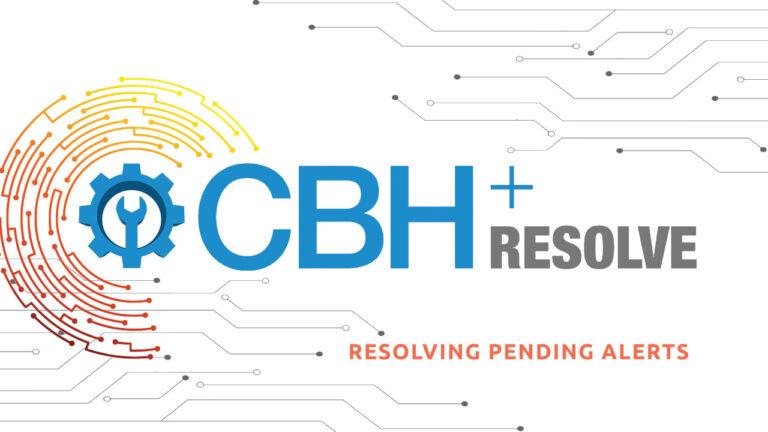What Are Chargeback Alerts and How Can They Help?

Not so long ago, chargebacks were difficult to prevent and contest. These days, a plethora of tools make preventing and combating chargebacks substantially less resource-intensive. Chargeback alerts, in particular, rank among the most effective and useful prevention tools. That’s why we’re going to take a moment to explain what chargeback alerts are, how they work, why merchants should use them, and also, how merchants can make them easier to manage.
Chargeback Alerts Defined and Explained
Chargeback alerts are essentially a warning sent to merchants that a cardholder is moving to file a chargeback. Crucially, the alert is sent before the chargeback is actually filed. Just as you might get a weather alert warning of an approaching storm, chargeback alerts give merchants a heads up, allowing them time to act.
Merchants are provided with a crucial window to act before the chargeback becomes a black mark on their record. This window or opportunity will allow the merchant to issue a refund, thereby preventing the chargeback from being filed. Further, while chargeback disputes take weeks to conclude, chargeback alerts can be resolved in a manner of hours or even minutes. Let’s take a closer look at some of the many benefits alerts provide.
Highlighting the Benefits of Chargeback Alerts
Chargeback alerts provide many benefits for merchants, and also, customers, banks, and card networks. The crucial benefits these alerts provide for merchants include:
Keeping chargeback ratios low
If a merchant suffers a high chargeback ratio, they may be dropped by their acquiring bank or could have to pay higher fees for processing payments. The merchant may be placed in a card network’s chargeback monitoring program, which will incur monthly monitoring fees, as well as additional per dispute charges. Ultimately, it’s crucial for merchants to keep their chargeback ratio low.
Resolving disputes quickly
The chargeback process can take weeks to conclude. In the meantime, funds are tied up and resources, including labor power, must be spent managing chargebacks. With alerts, the dispute can be resolved within a manner of hours.
Preventing chargeback fees from being assessed
Every time a chargeback is filed, the merchant will have to pay chargeback fees, which typically range from $25-$100. If you have a high chargeback ratio, you may be assessed extra fees per dispute. Chargeback alerts also incur fees, but these fees are essentially always less than chargeback fees.
The Chargeback Alert Process
Below, we’ve briefly outlined the process that chargeback alerts go through.
-
The chargeback alert process starts when a cardholder contacts their issuer to request a chargeback.
-
Instead of immediately filing a chargeback, the issuing bank can contact a prevention alert provider, such as Ethoca or Verifi.
-
The prevention alert provider will then send an alert to the merchant.
-
The merchant can choose to either issue a prompt refund or may decide to let the chargeback proceed so that they can dispute it.
-
If the merchant issues a refund, the prevention alert provider will inform the issuing bank of the refund. The issuing bank will then pause the chargeback. Once the refund is received, the issue is resolved and the chargeback is not filed.
-
If the merchant decides to dispute the chargeback, the card issuer will proceed with filing a chargeback and the chargeback representment process will unfold as normal.
Chargeback Alerts Versus Chargeback Notifications
Sometimes chargeback alerts get confused with chargeback notifications. While they may sound similar, in practice, notifications are quite different. A merchant will get a chargeback notification after the chargeback has been filed, meaning it’s too late to prevent chargeback fees and a rising chargeback ratio. The notification will contain a reason code broadly explaining why the chargeback was filed.
Chargeback Prevention Requires a Comprehensive Approach
When it comes to preventing chargebacks, alerts are one of the most effective tools available. That said, fighting chargebacks requires a comprehensive approach. We’ve put together more comprehensive guides for how merchants can fight chargebacks, but you can get started by reading the suggestions below:
-
Reduce the risk of “merchant errors,” such as forgetting to fulfill an order or mischarging the customer.
-
Make sure billing descriptors are clear and easy to identify.
-
Offer an easy-to-exercise return process.
-
Respond to customer or card issuer inquiries quickly.
Further, some chargeback prevention tools, like Verifi Order Insight and Ethoca Consumer Clarity, can be used to share more information regarding a specific purchase with the card issuer and cardholder. Often, this clears up confusion and can prevent invalid chargebacks from being filed.
Making Chargebacks and Chargeback Alerts Easier to Manage
Left unaddressed, chargebacks can become an existential threat as rising fees and lost revenues erode a merchant’s competitive position. Meanwhile, managing and preventing chargebacks manually can be difficult, but merchants can now use chargeback dispute management platforms that keep the whole process organized. Automation tools and easy-to-use dashboard can save time as well.
ChargebackHelp allows merchants to manage chargeback alerts from both Ethoca and Verifi through one easy-to-use platform. We also offer automation tools that can automatically resolve disputes for merchants. This way, merchants can focus on managing and growing their business. You can also self-manage alerts if you’d rather retain more hands-on control.
Besides managing alerts, our platform offers other powerful chargeback prevention features and also offers tools that make it easier to win chargeback disputes. By adopting a holistic approach to combating chargebacks, merchants can protect their bottom line and improve their market position.






